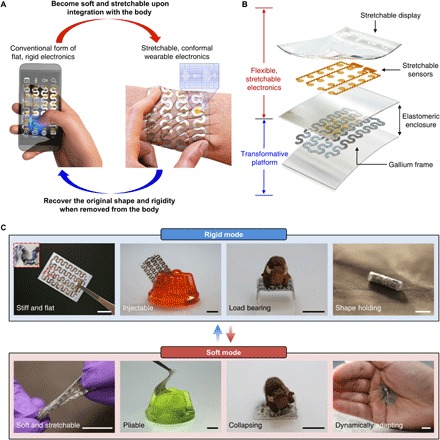Fig. 1. Schematic illustrations and images of a TES that can shift its form from a conventional rigid electronic device to a soft, stretchable electronics format, or vice versa, through a temperature-dependent phase transition.

(A) Conceptual illustration of the key feature of the system. A flat, rigid, and handheld electronic device becomes soft and stretchable upon integration onto the skin due to the effect of body temperature and thus converts into a wearable device that can measure physiological signals [e.g., electromyogram (EMG) and electrocardiogram]. Similarly, the device can recover its original rigidity when removed from the body to decrease its temperature. (B) Exploded-view schematic diagram illustrating the system architecture. (C) Images of a TES demonstrating its mechanical characteristics in the rigid (top) and soft (bottom) mode. The inset of the far left image in the rigid mode shows a magnified view of the region indicated by the red dashed box, highlighting a stretchable gold electrode integrated with the gallium-based transformative platform. Scale bars, 1 cm. Photo credit: Jae-Woong Jeong.
